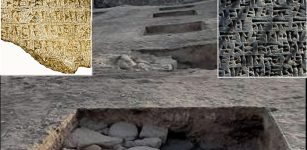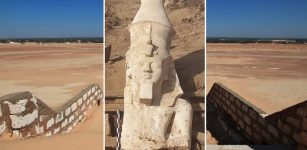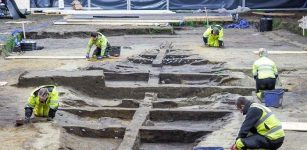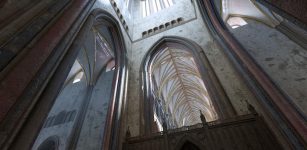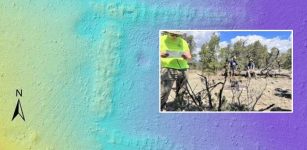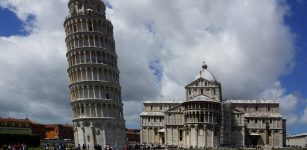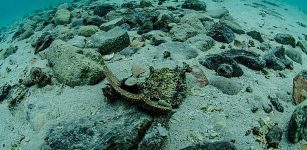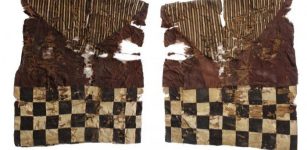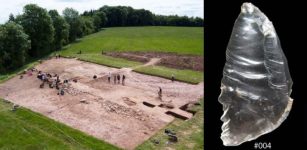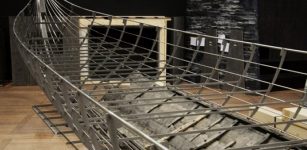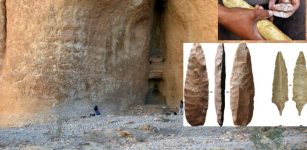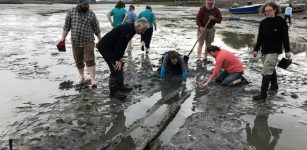Mystery Of The Giant Gjellestad Viking Ship Burial Deepens – Unknown Structures, Pre-Existing Mound And Rituals – Investigated
Jan Bartek - AncientPages.com - The investigation of the giant Gjellestad Viking ship burial continues. When scientists examined remnants of the mound that surrounds the ship, they discovered some mysteries.
In 2018 archaeologists made an incredible discovery in Norway. Using high-resolution georadar scientists unearthed a giant Vikings ship along with a Medieval settlement and 3 burial mounds.
“We are certain that there is a ship there, but how much is preserved is hard to say before further investigation”, Morten Hanisch, county conservator in Østfold said at the time of the discovery. Today we know with certainty a giant Viking ship was unearthed at the site.
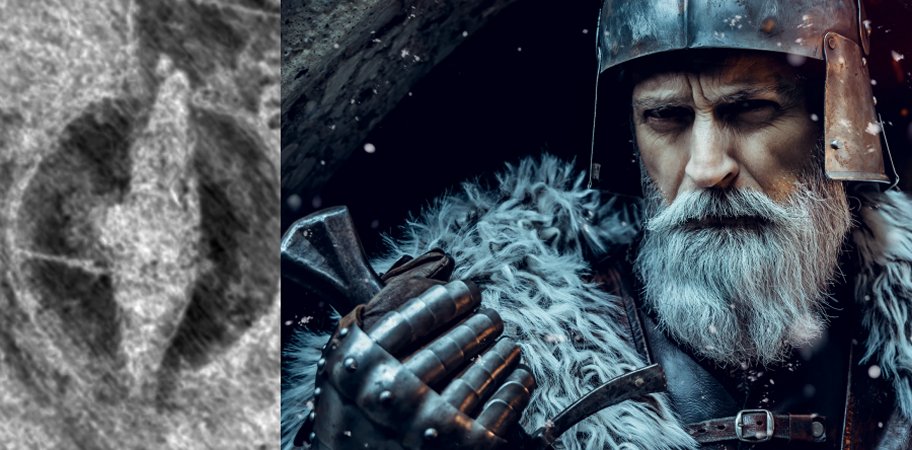
Left: Ship outline. The outline of the Viking ship can clearly be seen in this image from the radar data. Image: NIKU - Right: Viking Chief - Image source
This was a unique archaeological discovery because Viking ship burials are rare. By modern standards, it might sound crude, but Viking burials were intended to be a spectacular ritual. Viking funeral traditions involved burning ships and complex ancient rituals.
The Gjellestad Viking ship is huge, measuring nearly 20 meters and yet, it’s smaller and narrower than the Oseberg ship and or Gokstad ship.
Recent geoarchaeological and geophysical analyses show that the construction of the Gjellestad ship mound was carefully planned and executed.
According to NIKU researcher and archaeologist Lars Gustavsen, the Viking ship burial was a complex procedure. Vikings did much more than just placing the ship with the deceased on land and shoveling soil over it, according to NIKU researcher and archaeologist Lars Gustavsen.
“Here, the area of the mound has been carefully prepared by removing topsoil so that the intact subsoil was exposed. It is this subsoil that we see in the GPR data as a distinct black area around the grave itself.”
Evidence Of Rituals And Unknown Structures
“Our analysis shows that this is soil that has been formed on-site; and the characteristic dataset signature must, therefore, be due to the fact that the mound covering the grave has changed the physical properties of the soil - likely due to soil compression from the heavy mound” Gustavsen continues.
The deceased and their grave goods were placed inside the ship, and rituals were performed before the mound was sealed.
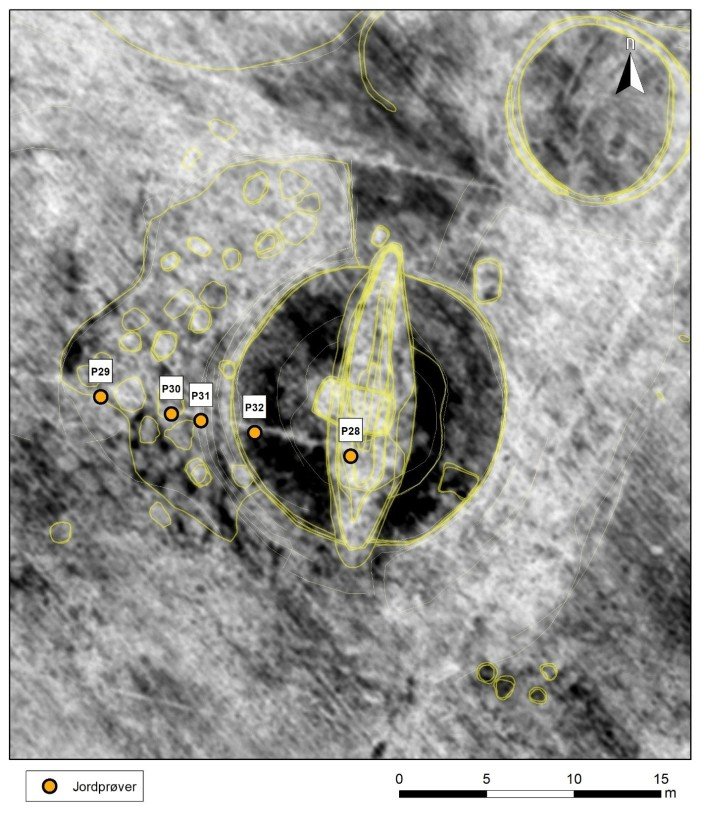
The soil samples were taken from the mound construction, in the presumed subsoil, and in the trench for the ship burial. (Illustration: NIKU)
“In the area outside of the ship, we are able to discern structures that we interpret as stone-filled pits and postholes. It is difficult to interpret these structures as purely functional,” Gustavsen says.
“But since we are familiar with such actions connected to other ship graves, both from excavations and written sources, it is very tempting to place these structures in the context of such rituals,” he continues.
Researchers have also completed the soil analysis and the results show the mound material consisted of turf or sod. Interestingly, scientists discovered the turf within the Gjellestad mound was from a different location.
“It is unusual that we are able to prove that the turf in the Gjellestad mound couldn’t have been formed in the area, but that it must have been brought from somewhere else.
Due to similar complexity observed in the more well-known ship burial mounds and in many of the larger mounds that have been investigated, we are able to conclude that the rules for constructing these mounds were familiar and important for communities that entombed their members in this fashion,” Gustavsen says.
Gjellestad Viking Ship Burial Belongs To An Iron Age Elite
It’s obvious those who were put to rest inside the mound were no ordinary people. According to researchers the complexity and time demanding construction of the burial mound suggest the Gjellestad Viking Ship belongs to an Iron Age elite.
According to Science in Norway, “the researchers have been unable to determine whether The Gjellestad Ship was laid down in a pre-existing burial mound. They also wonder if the mound was a new construction within an existing, older burial ground, or if the entire burial ground was built in just a few generations.
This will only be possible to conclude with further investigations of the burial grounds.
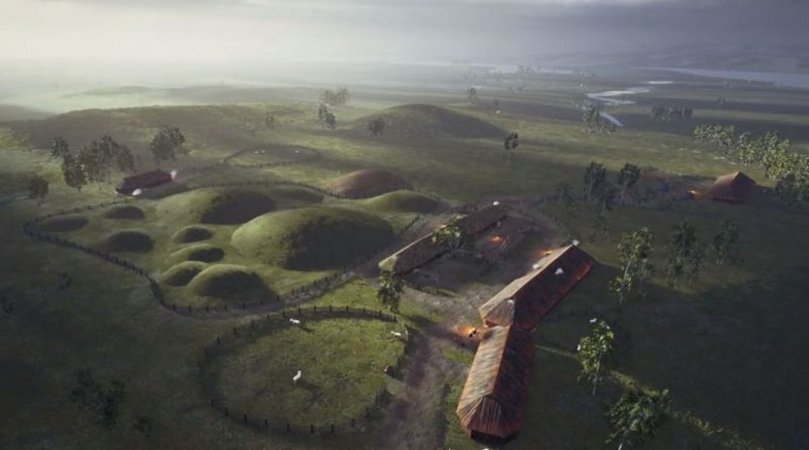
The reconstruction of the Gjellestad Viking ship burial site. Credit: Gjellestadstory.no
“If the mound was added as a new construction within an existing burial ground, we may be able to imagine a situation wherein a family from the upper social strata wishes to ally themselves with a pre-existing structure of power, in order to consolidate their own position within the social and political landscape,” Gustavsen says.
See also: Explore The Giant Gjellestad Viking Ship Burial In This Stunning Virtual Tour
This same scenario could apply if the ship was placed in a pre-existing mound, but in that case, an interpretation could be of family status being marked by an act of aggression, the researchers say.
“Either way, we are able to ascertain that the Gjellestad mound and the surrounding complex belongs to an elite stratum of the Iron Age,” Gustavsen continues.
The recent study of the Gjellestad Viking Ship Burial has provided us with some answers, but also delivered a couple of mysteries that will most likely be solved in the near future.
Written by Jan Bartek - AncientPages.com Staff Writer

